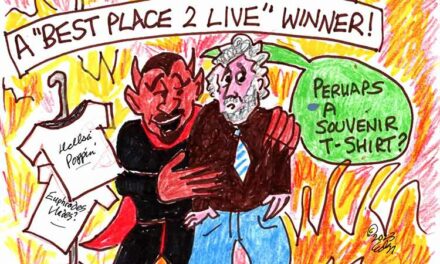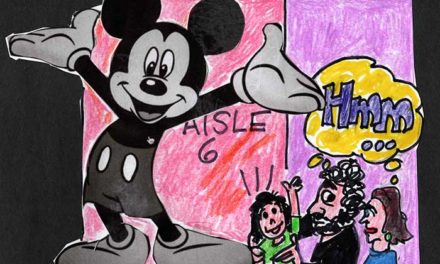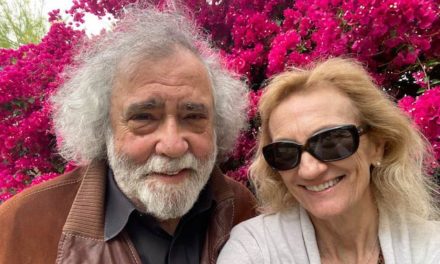California, Here I Stay
Tribute to a Capital I’ve Called Home for 44 Years
By Ed Goldman
This month marks the 44th anniversary of my seeing Sacramento for the first time. Since I moved here as a partially formed adult—a project that continues, year after year—I had some sense of comparison to other places I’d lived: New York City for my first eight years, Southern California for my subsequent 18. This town is still my fave.
Along the way, I was privileged to have three vacation homes—in Capitola, San Francisco and (aaaargh!) Phoenix, a great place to live if you’re a gun-toting cactus. This allowed me to assess how my life might have been if I’d moved into them as my main residences (Capitola: lovely; San Francisco: expensive; Phoenix: beyond horrible).
I always came back to Sacramento, a city and region that for many years was the Rodney Dangerfield of American cities and regions—for younger readers, this means it got no respect.
This is often the situation with state capitals when their main industry is government itself. For example, in addition to being California’s capital, Sacramento is also the seat of Sacramento County, a vast expanse of suburbs, industry, agriculture, commerce and far more available free parking than you’ll find in most of the city. This is usually the case with any state capital’s midtown and downtown sections, but as we’ve seen here, it doesn’t have to be its destiny. Sacramento’s urban core has gone, in the time I’ve lived here, from being a 5 p.m. ghost town to becoming a vibrant, bite-size metropolis, complete with occasional gridlock and political protests. (The latter rarely take place in the county, even with all that available free parking. It may be partly attributable to the local TV stations’ being situated in or close to downtown.)
I had flown up here one very hot August night in 1976 so that I’d be in time for an 8 a.m. job interview at Sacramento City Hall the next day. If hired, I would become only the second public information officer in the city’s history—but for me, the prospect of getting out of Southern California was more important than what would be that very inconsequential footnote in California history, if I even got the gig. This job ostensibly represented an emotional exit ramp: my dad had died two months earlier and I was so grief-struck it was hard for me to even drive the same streets he had during the years we’d lived there.
In addition, I was in a very early marriage that began sending out distress signals a few moments after we said ”I do.” I think I hoped that by changing the scenery we might also change its chances for success.
My interview was conducted by a panel consisting of the city’s head of Personnel—this was before that function was rebranded as Human Resources, which has always sounded slightly cannibalistic to me—as well as another mid-manager and the editor of a now-vanished statewide political magazine whose work I’d always admired. The chat went well but, even so, I figured this may be my first and final look at Sacramento; so, after it ended, I walked through the downtown.
Another hot day was predicted but it was only about 9:30 a.m. and there was a timid breeze wafting its way up from the confluence of the Sacramento and American Rivers a few miles away. I walked along the K Street Mall, which I later discovered was a local and even national joke (the latter, among urban planners) for its having squandered a chance to make the area pedestrian-friendly even though it had been closed to car traffic. There were large concrete animal sculptures that kids ran to play on but unfortunately, also bonked into and fell from, onto more concrete. At some point, rubbery pads were placed at the foot of the pieces but this only made the kids bounce a little once they hit the ground. The artwork was eventually dismantled, which I imagine came as a relief to the city’s Risk Management Division.
I found downtown Sacramento charming. When it became lunchtime, people poured out of the office buildings and I discovered that in some ways, Sacramento was The Land That Fashion Forgot. Some guys still sported wide ties, bell-bottom slacks and mutton-chop sideburns. Some women still wore miniskirts, white high-heeled boots and coifs that could have got them hired as Buckingham Palace guards with no need for helmets.
An hour or so later, almost everyone walked back to their offices holding ice cream cones. For some reason, I’ve always thought that adults with ice cream cones look like kids. When you watch people intensely focused on licking them—top to bottom, bottom to top or circling the perimeter, as though conducting a military operation—you sense they’ve been doing so with their own specific style since childhood.
In the time I’ve lived here I’ve had only two W-2 jobs, the final one ending in early 1984. My first marriage imploded but my second one lasted nearly 29 years, until my wife’s passing. I even stumbled into a third one, which also ended in divorce. I take full responsibility for the failures of the bookended unions and none of the credit for the successful one, which produced my one and only child, now 34 years old, Jessica. She’s already lived in Paris, New York City, San Francisco and currently, Dallas. But she was born in Sacramento and I have a feeling (and hope) she’ll move back here someday. She always does. I guess it’s still her fave, too.
Ed Goldman's column appears almost every Monday, Wednesday and Friday. A former daily columnist for the Sacramento Business Journal, as well as monthly columnist for Sacramento Magazine and Comstock’s Business Magazine, he’s the author of five books, two plays and one musical (so far).











